

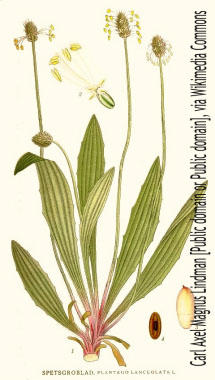
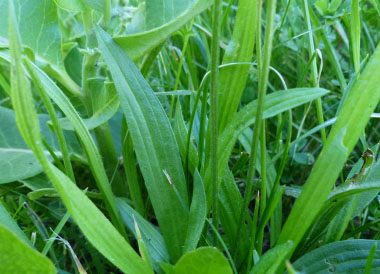
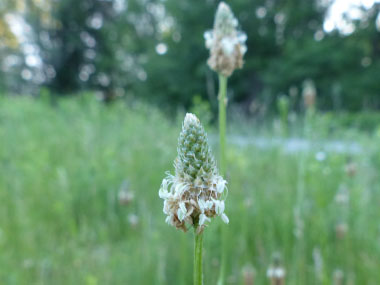
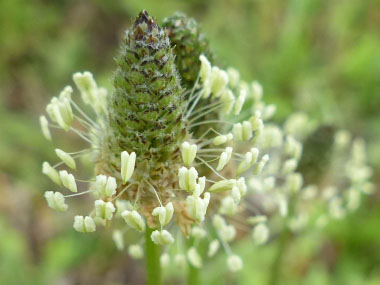

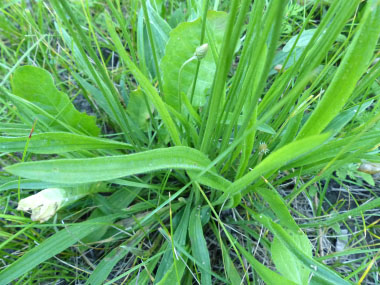
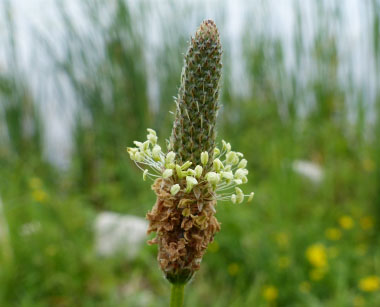
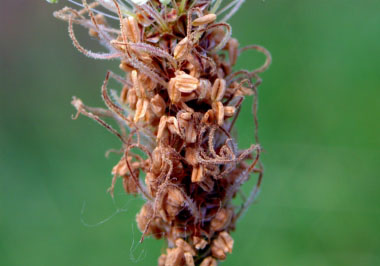
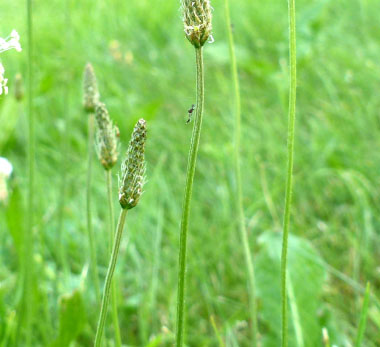

To support our efforts please browse our store (books with health benefits, etc.).
Ribwort is a species of flowering plant in the Plantaginaceae (plantain) family. It is also known by several common names such as English plantain, narrow leaf plantain, buckhorn plantain, ribleaf and lamb's tongue. The only weed that ribwort is likely to be confused with is broad-leaved plantain yet there is a very distinct difference in leaf size and shape. This plant is a perennial, reproducing only by seed.
Distinguishing Features
Ribwort is easily distinguished by its rosette of long, narrow leaves with prominent, parallel veins. It has a slender, leafless stem tipped with short, dense, oval spikes of tiny flowers. This is a drought-tolerant plant so it stands out in areas that have not seen much rain.
Flowers
Flowers are small, white and they surround a brown, cylindrical head on a grooved stalk. Flowers can be present at anytime throughout the growing season. Flowers are small, approx. 2 to 3 mm (0.08–0.12) wide, fused, 4-lobed; lobes quite sharp, and 1.5–2.5 mm (0.06–1 in.) long. Calyx is 4-lobed. The flower has 4 stamens , long filaments, anthers are yellowish white and the pistil is fused
 Fields
of Nutrition has medicinal benefits and vitamin/mineral content of Ribwort.
Fields
of Nutrition has medicinal benefits and vitamin/mineral content of Ribwort.
Leaves
Leaves grow in a basal rosette, stalked, and are quite erect. The blade is lanceolate–almost linear, with margins entire–sparsely toothed, sparsely haired, parallel-veined.
Height
Ribwort grows anywhere from 10 to 50 cm (4 to 20”). The stem is leafless, arched base–straight, clearly 5-edged, varyingly hairy scape.
Habitat
Ribwort is found throughout North America, Europe, Iceland, northern and central Asia, Australia, and New Zealand. This is a common weed in lawns, meadows, dry meadows, waste ground.
Edible Parts
Ribwort can be eaten raw or cooked. The older the leaves the more bitter they will taste. They do have fibrous veins making it a little bit tricky to eat raw unless chopped. Seeds can be ground into a powder and added to flours in baking.
Other Name
Narrow Leaf Plantain.
Winter Survival Food Handbook

PDF Plant Magazines
Types of Wild Food
Geographic Zones Seasons
Disclaimer
EdibleWildFood.com is informational in nature. While we strive to be 100% accurate, it is solely up to the reader to ensure proper plant identification. Some wild plants are poisonous or can have serious adverse health effects.
We are not health professionals, medical doctors, nor are we nutritionists. It is up to the reader to verify nutritional information and health benefits with qualified professionals for all edible plants listed in this web site. Please click here for more information.
Why Edible Wild Food?
- Food costs are rising
- Free, wild food is readily abundant
- Wild food adds nutrition to your diet
- Wild food can help treat various medical conditions





